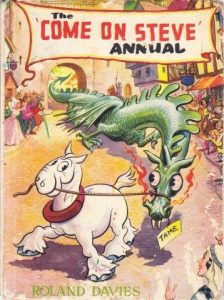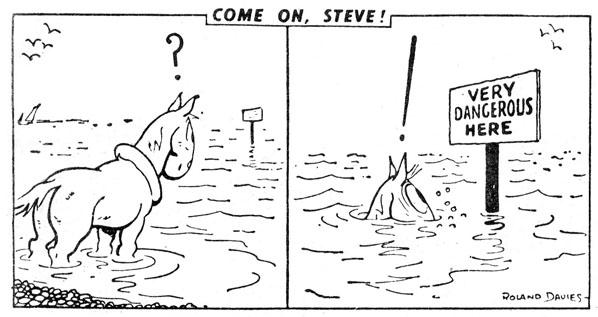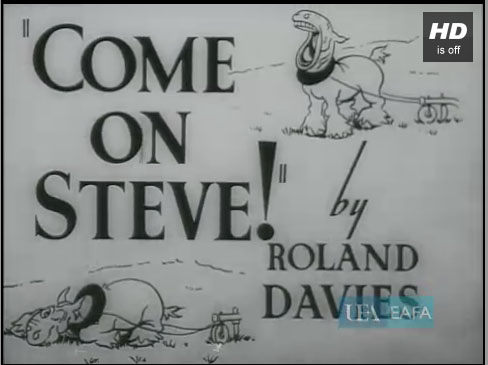
Happy mid- August all,
In Thunderbean news, work continues on many fronts. Shipping and correspondence are being handled while I’m concentrating on production for the sets- and its making a big difference.
It was especially fun putting finishing touches (again) on several of the ‘special’ discs. Scanning continues weekly, but just in 16mm at the moment; I’m very much hoping it expands to the 35mm stuff soon, and hope some of the things coming from other places help to fill in a few final gaps. Some things juts have to wait for the archives to be open to continue. In the meantime, there’s a lot to catch up on- and it’s going quite well.
The scans for this week are especially fun. Van Beuren of course is in the mix with things for the Tom and Jerry set and Aesop’s Fables. A few more Kinex shorts are in the mix there. Another Bunin film is also in the mix. Everything (but a single reel) is now scanned for More Stop Motion Marvels, and I’ve been spending some time in the TLC phase of that project now that most of it is scanned and cleaned up. Rainbow Parades is entirely authored except for the animation we’re working on for the menu.
We’ll let some of the new materials be a surprise for just a bit longer. I’ve been tweaking both this set and helping with the Puppetoons 2 set this week as well.
 Enough of all that! Here’s a cartoon series to think a little about!
Enough of all that! Here’s a cartoon series to think a little about!
There are 6 animated cartoons in the Steve the Horse series, based of Roland Davies popular British comic strip ‘Come on Steve!’ In GB, the strip ran from 1932 through 1947, carried by the Sunday Dispatch and The Sunday Express. The strip consists of mostly cute sight gags involving Steve; Elements of the graphic style and content remind me a lot of Otto Soglo’s Little King. While far from a groundbreaking series, there enjoyable moments throughout. Cinderella Steve is downright bizarre throughout, with poor Steve caught in a hay baler early on— and enjoying being spanked by the machine.
The animated films were produced at a studio founded by the artist himself, recruiting young artists from several art schools to animate the films. Funny enough, the films seem to have a kinship at times with the Van Beuren Studio in New York a handful of years earlier. While primitive in animation, they’re still a fun watch- and if Steve the Horse can entertain you a little after all these years, he’s done his duty.
The small studio survived just long enough to produce 6 films and a 1937 advertising short for Ford Tractors (titled ‘Come on Steve!’ According to the article below, another film was planned in color that doesn’t seem to have happened.
Here’s a nifty page about the 9.5mm release of the Steve the Horse shorts.
And, here’s a short article on Roland Davies himself, with some nice examples of the strip.

Steve Steps Out – the first cartoon in the series, from 1936.
Here is Steve’s Treasure Hunt – second in the series
The third in the series is Steve’s Canon Crackers. Sadly, number 4, Steve of the River, isn’t posted on-line.
Here’s a silent print of the fifth entry, Steve in Bohemia. Even without a track, it might be my favorite of them.
The last of the shorts, Cinderella Steve:
And, a final film: Steve advertising Ford Tractors. This one is especially neat in the Roland Davies appears in live action drawing Steve at the beginning (you may need to download flash to have this movie work):
So, in a single sitting, if you were able, you’ve seen most of Steve’s exploits on the silver screen.

Here is a small clip I found on line dating from 1928. Was ‘Come on Steve!’ a common call to make for a horse *before* the strip?
Have a good week everyone!



 Steve Stanchfield is an animator, educator and film archivist. He runs Thunderbean Animation, an animation studio in Ann Arbor, Michigan and has compiled over a dozen archival animation DVD collections devoted to such subjects at Private Snafu, The Little King and the infamous Cubby Bear. Steve is also a professor at the College for Creative Studies in Detroit.
Steve Stanchfield is an animator, educator and film archivist. He runs Thunderbean Animation, an animation studio in Ann Arbor, Michigan and has compiled over a dozen archival animation DVD collections devoted to such subjects at Private Snafu, The Little King and the infamous Cubby Bear. Steve is also a professor at the College for Creative Studies in Detroit.






















That last film clip from 1928 shows Steve Donoghue, one of England’s all-time greatest jockeys, for whom the cartoon character was named.
It’s always a pleasure to discover a cartoon series from the ’30s that’s new to me. I have a feeling that these cartoons were a lot funnier in the storyboard stage; the gags are good, but the timing is weak. The sound was obviously post-dubbed, and the music taken from stock recordings. While the music does an adequate job of setting the scene, it fails to highlight the action. These cartoons strike me as being closer to those of the silent era than to the contemporary product of the Hollywood and New York studios. Perhaps that’s why the silent print of “Steve in Bohemia” is the best of the lot. In any case, I enjoyed them all and am glad that they’ve survived to the present day. Bravo, Steve!
One of the cartoonists who worked on the “Steve” series was Ronald “Carl” Giles, before he became a cartoonist first with Reynolds’ News, and then settled in for a nearly half-century run at the (London) Daily Express (interestingly enough, considering where the Steve strip appeared). The book “Giles’ War” by Tim Benson goes into Giles’ experiences in working on the series.
Here’s “Steve in Bohemia” with sound on the East Anglian Film Archive website: http://www.eafa.org.uk/catalogue/821
Good article and great movies. If anyone still had any doubts about the importance of Walt Disney for the development of the art of animation, those doubts are over. In 1936 Disney was releasing “Cock Robin”, “Moving Day” and “Donald and Pluto”; meanwhile these films seem to have been made a decade or two earlier, including question and exclamation marks jumping out of the heads. I like them though.
Very sad to report that all those Youtube uploads on the 95filmforever channel, and the Pathefilm.uk site were the work of reknowned film collector Grahame Newnham, who I recently read passed away from Covid-19 earlier this year.
Steve’s Cannon Crackers was recently shown on Talking Pictures TV in the UK, using an excellent print that I presume came from the BFI archive. AFAIK, TPTV’s owner Renown Pictures owns these shorts as they are the custodians of the Butcher’s Films library.
Sadly the uploader of the 9.5mn has recently passed away due to the coronavirus.
So Steve Donoghue is my some amount of greats uncle, I’m not entirely sure of the exact relation name, “Come on, Steve!” was something that all the crowds would shout as he raced, this is where the strip and animations got it’s name from.
He was the most popular Jockey of the time and had many different achievements, this year was the 100 year anniversary of his Triple Derby win for example. Anyone who knew anything about racing at the time knew the call “Come on, Steve!”, there has also been books and other things made about him.
It’s really nice to see stuff related to him is online somewhere.